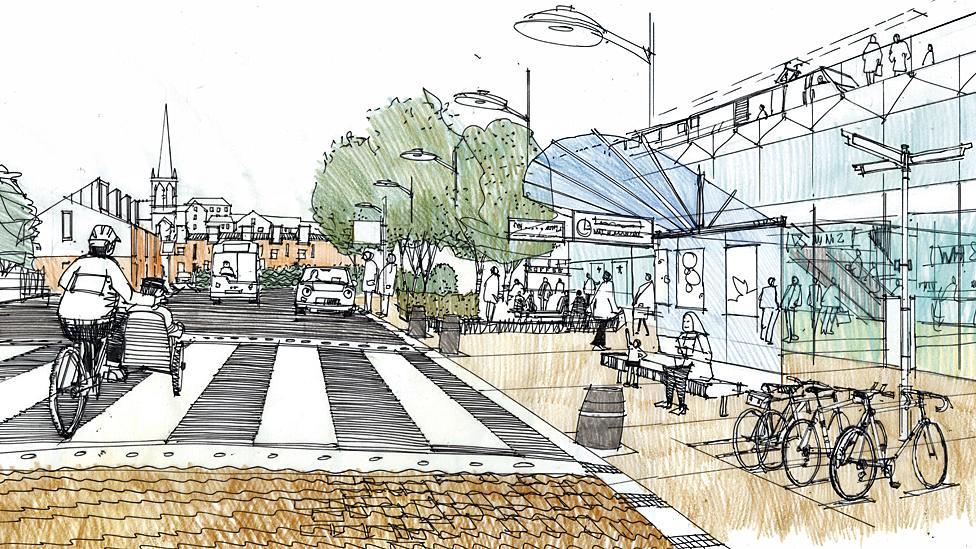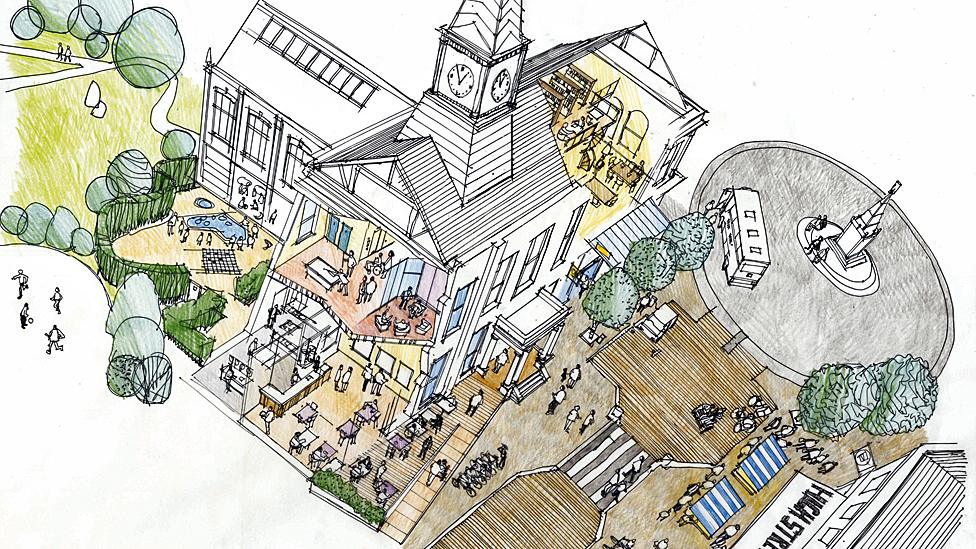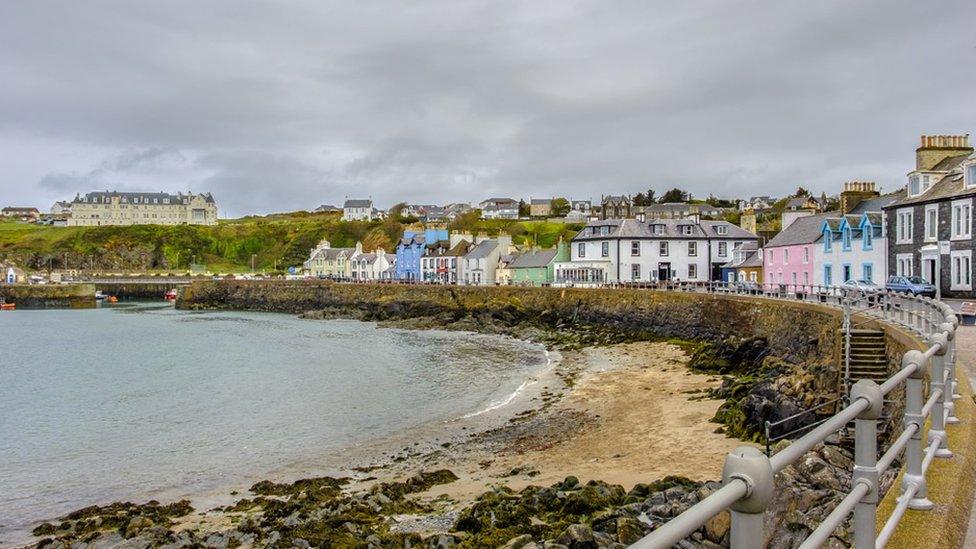How do you build a great place to grow old?
- Published

The number of people living on their own in Scotland has never been higher.
The main reason is an ageing population - which is good news for those who are living longer, but also presents challenges for society as a whole.
Age Scotland has highlighted the need for more accessible, age-friendly homes which would let people live independently as long as possible.
Dumfries and Galloway, with its ageing population and smaller-scale towns and villages, believes it is the perfect place to learn how this could be achieved.
It wants to become a testing ground for intergenerational living - allowing older people to play an active part in the community.
The thinking is that everyone involved could benefit, both young and old.

Architecture and Design Scotland has done a lot of work on how better intergenerational living might work
Experts from across the country gathered at an event at the Easterbrook Hall in Dumfries recently to discuss the subject.
The location was not chosen by chance.
The Dumfries and Galloway care campus project, backed by the Crichton Trust, is looking at ways to make the region "a great place to grow old".
"It is an important subject for all of us because clearly we are all ageing," said the trust's chief executive Gwilym Gibbons.

"Rural areas are aging faster than other other areas.
"So here at the Crichton Trust we are trying to imagine what the world looks like in 15 to 20 years time with a significant proportion of the population being over 65."
That means developing homes with the technology to help people in later life - while also seeing older people as "a key asset in terms of experience and knowledge".
He said the project was about how to create places that are "really vibrant" in an ageing society.
Mr Gibbons said that meant looking at all the characteristics of creating a "caring compassionate community" where people could live.
"We're looking at testing ideas and seeing what we can do," he added.

Steve Malone, principal architect with Architecture and Design Scotland, said the aim was to create places where people from all generations could live together.
They have been looking particularly closely at town centres.
"In a nutshell, that's looking at the benefits and the barriers to town centres as places to live, in particular for the ageing demographic," he said.
This included studying housing types, their locations and also - just as importantly - the spaces between the buildings.
Amanda Britain, who chaired the event in Dumfries, said that getting it right could have huge benefits.

The spaces between buildings and other facilities are all part of creating good places to grow old
"We have a growing number of older people and so we're all living longer," she said.
"We have challenges with that - you know that this is not all bad.
"Older people contribute massively to the economy and to society."
One goal of intergenerational housing is to ensure that people have a good quality of life and retain social connections for as long as possible.
Ms Britain said studies had shown that both young and old benefited from greater interaction with one another.

Villages in Dumfries and Galloway could be used to test intergenerational housing
The south west of Scotland is happy to play a guinea pig role in developing those links.
"The reality of Dumfries and Galloway is important here because it means that we can test ideas and solutions and think of new ways of providing care and support for individuals that then can either be replicated or scaled into other environments - into cities," said Mr Gibbons.
"So it's about Dumfries and Galloway absolutely leading the way on what future care looks like, what living looks like in later life.
"That's about supporting people to stay cultural, economically and socially active as long as possible and as healthily as possible."
And the lessons learned in south west Scotland might help tackle similar issues across the rest of the country.